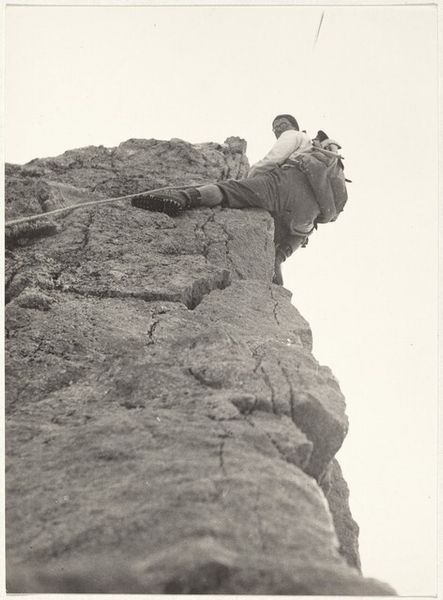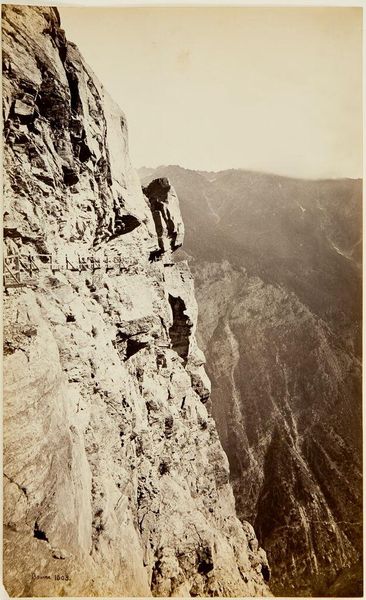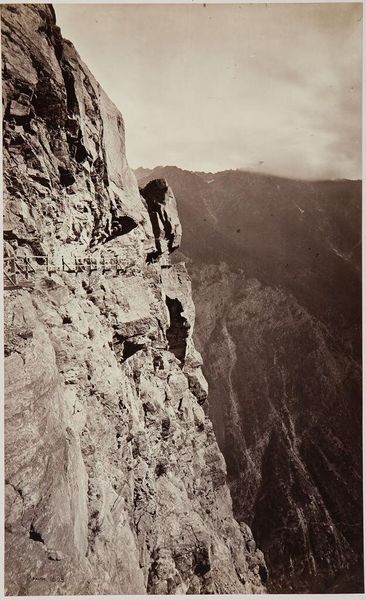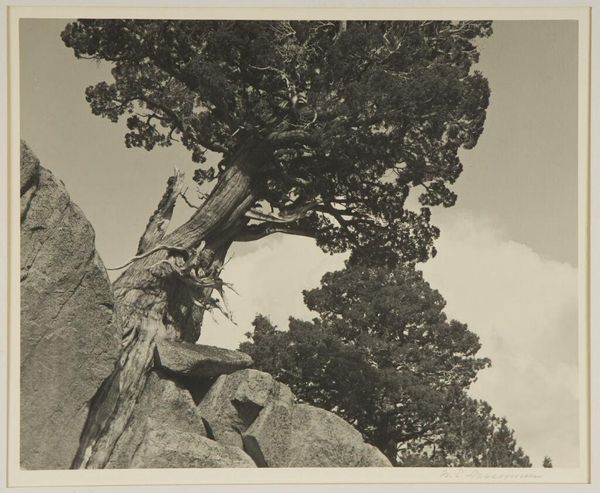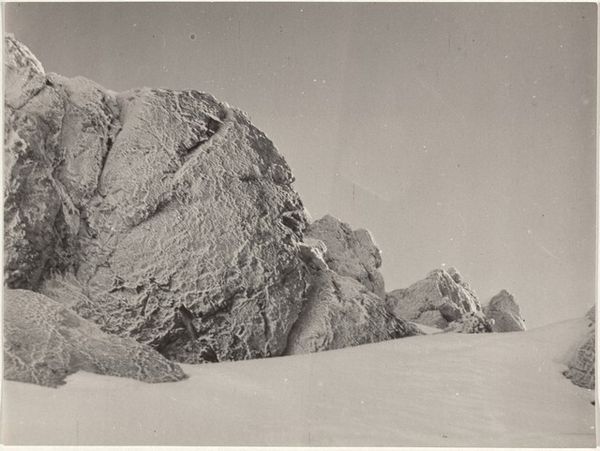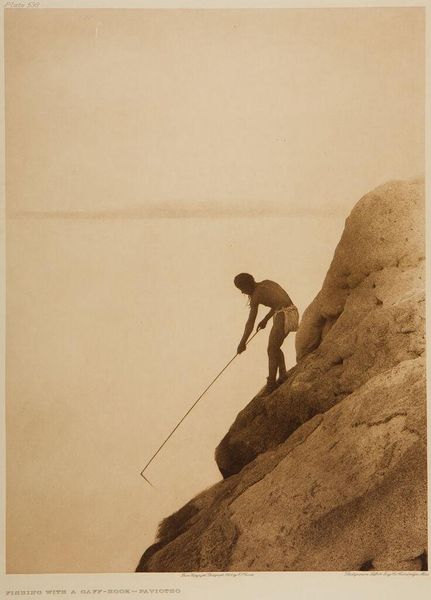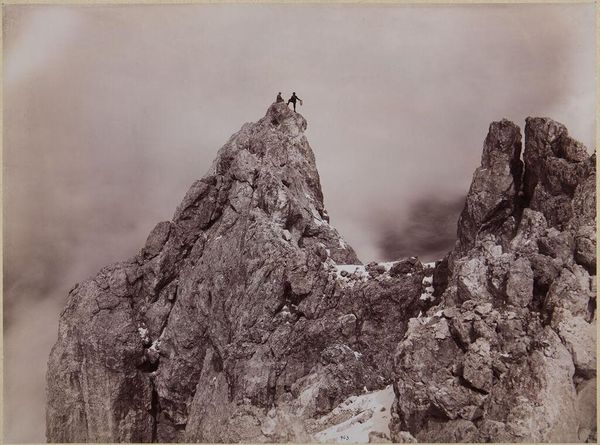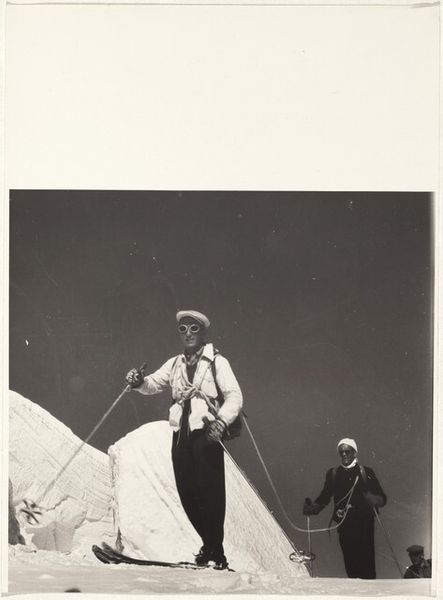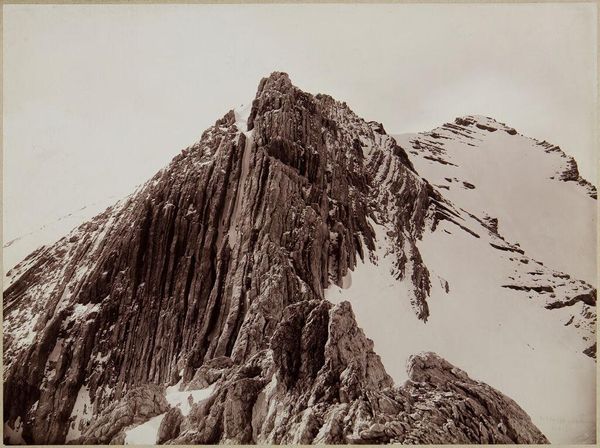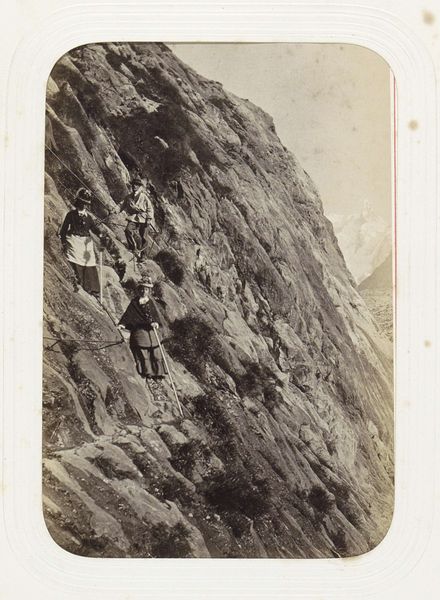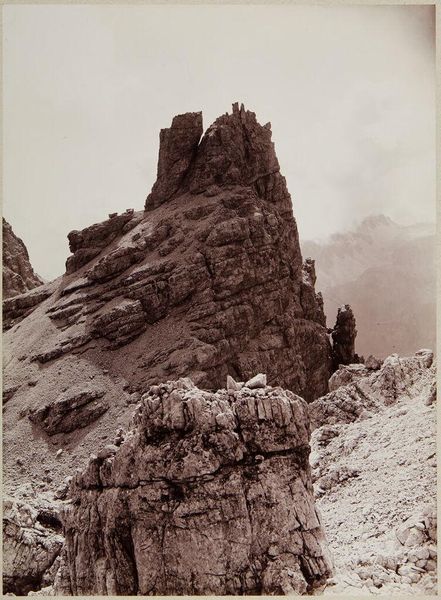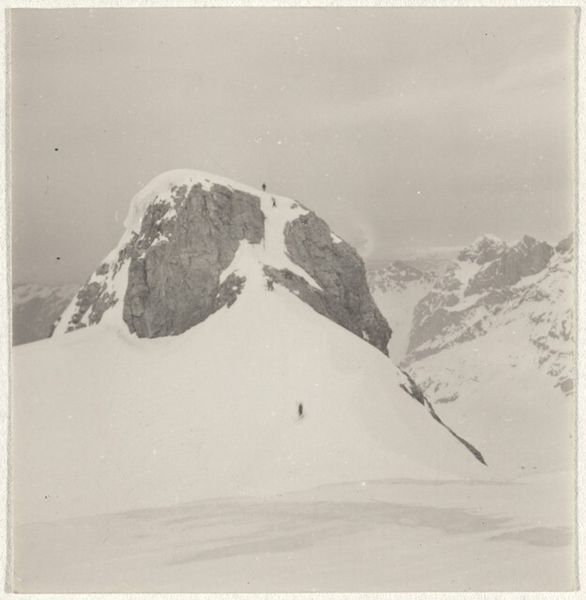
print, photography, gelatin-silver-print
# print
#
landscape
#
outdoor photograph
#
photography
#
gelatin-silver-print
#
monochrome photography
#
realism
#
monochrome
Dimensions: sheet (trimmed to image): 5.8 x 5.5 cm (2 5/16 x 2 3/16 in.)
Copyright: National Gallery of Art: CC0 1.0
Editor: This is Robert Frank's gelatin silver print, "Climbing with Pieter Dirk van der Poel, Canton of Valais," taken in 1944. It’s such a stark image, really emphasizing the physical effort and the materiality of the rock itself. What stands out to you about this photograph? Curator: The starkness resonates with the immediate postwar context. Silver gelatin prints, like this one, became a means of democratizing photography, moving away from more precious materials. Consider the labor involved, both Frank’s and van der Poel's. How does that physicality contrast with the romantic ideal of landscape often found in art? Editor: I hadn’t thought about it in terms of democratization. It's interesting how the medium itself, gelatin silver, makes it accessible while simultaneously capturing this intense, almost isolating activity. Does the lack of color impact that? Curator: Absolutely. The absence of color directs our attention to the textures: the rough rock, the woven rope, the climber's worn clothing. Each of those elements speaks to specific production processes. Consider the clothing: what does that suggest about access to resources, or the ready-made versus hand-made? Editor: It feels like the clothing is practical, worn, and essential to their task. Everything points to utility over decoration. It really makes me consider how the constraints of resources available and manufacturing influence how the subject appears and participates in their sport. Curator: Precisely. Frank isn't just capturing a landscape, he's showing us labor and survival etched into the landscape through these materials and the activity. How different from a pastoral painting depicting leisure, isn’t it? Editor: Definitely. Thinking about it now, I'm struck by how the materials – the rope, the rock, the photographic print itself – are all integral to understanding the historical moment and the human effort being depicted. Thanks, I hadn't seen the work this way! Curator: My pleasure. Materiality opens up pathways into histories often overlooked in traditional art analysis. It prompts us to consider art as enmeshed with everyday life, labor, and material conditions.
Comments
No comments
Be the first to comment and join the conversation on the ultimate creative platform.
